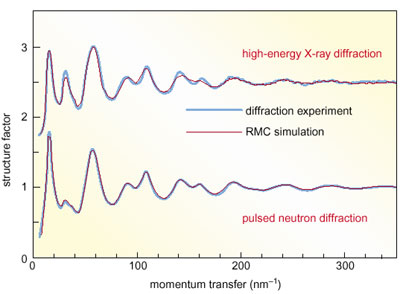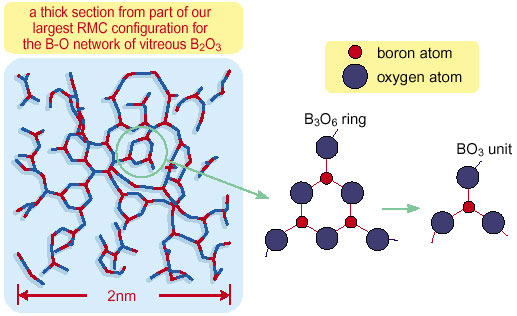Many materials in common use are amorphous (disordered, non-crystalline) substances, such as glasses, liquids, and polymers. The structure of such materials is difficult to characterize, because unlike crystals, these systems do not have a periodic structure.
X-ray diffraction measurements are one of the most useful methods to investigate the structure (atomic arrangement) of materials. However, up to now the experimental data from X-ray diffraction measurements have been limited in accuracy and in structural information content (the range of momentum transfer), because of the relatively low energy of X-rays used for these measurements.
Using monochromatized high-energy (30 -114 keV) synchrotron radiation at SPring-8, we have succeeded in recording diffraction measurement data which yield an accurate structure factor (normalized diffraction intensity) for one of the most popular and important amorphous materials, vitreous B2O3, with a wide range of momentum transfer (Fig. 8-7). Further, we have created a three-dimensional, realistic structural model of vitreous B2O3 by reverse Monte Carlo (RMC) simulation applied to high-energy X-ray and pulsed neutron diffraction data (Fig. 8-8). Clearly, the structural model shows that the B-O network contains ordered regions containing the planar B3O6 (boroxol) rings. The combination of computer simulations such as RMC and accurate diffraction data obtained with X-rays and neutrons appears to be sufficient to determine the structure of amorphous materials.
Such an accurate method for three-dimensional modeling of atomic arrangements clearly has great potential for research and structural design of disordered materials. |


